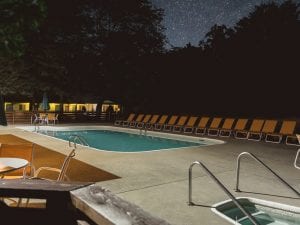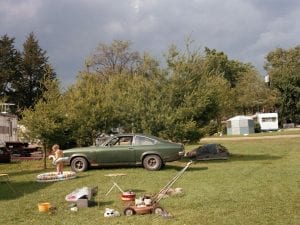“Why do we feel that we belong in some places and not in others?” asks Lise Johansson (b. 1985), an award-winning photographer based in Copenhagen. The artist is interested in our relationship with spaces: how do they shape our identities? What influence do they have on politics, culture and social life?

Homes, hotels and hospitals and are amongst the places explored in Johansson’s oeuvre. The resulting images are minimal, clean and linear. Anonymous figures stand in pastel-tiled doorways or at bright windows, light streaming in through open blinds and bouncing off smeared mirrors.

In one shot, from the I’m not here series, a subject bends over a metal sink. Another hides their face from view. I’m not here is a series of self-portraits photographed in an abandoned hospital. “The project is a reflection on mental illness and about identity in a state of transition,” Johansson says.

In these images, things are not always what they seem. Johansson’s goal is “to create a sense of a distorted reality.” To do so, she builds miniature scale models of rooms, combining them with textures and objects photographed to use as building blocks in post-processing. The results are subtle, yet unsettling.

“It is important to me that the final images retain an uncanny balance between the natural and the constructed, playing with scale and perspective to make the viewer question what they see,” Johansson explains. The shots bear hallmarks of the unheimlich: doppelgängers, anonymity, unexpected interactions.

Shown at the top of the page is Absence, which developed from a miniature scale model of a room the artist built from scratch. “It is a self-portrait and was created while I was in between homes,” she notes. “It is a reflection on the situation I was in… seeking to apprehend the concept of home in its absence.”
Words: Eleanor Sutherland
All images courtesy Lise Johanssson.
1. Absence
2-6. I’m not here





